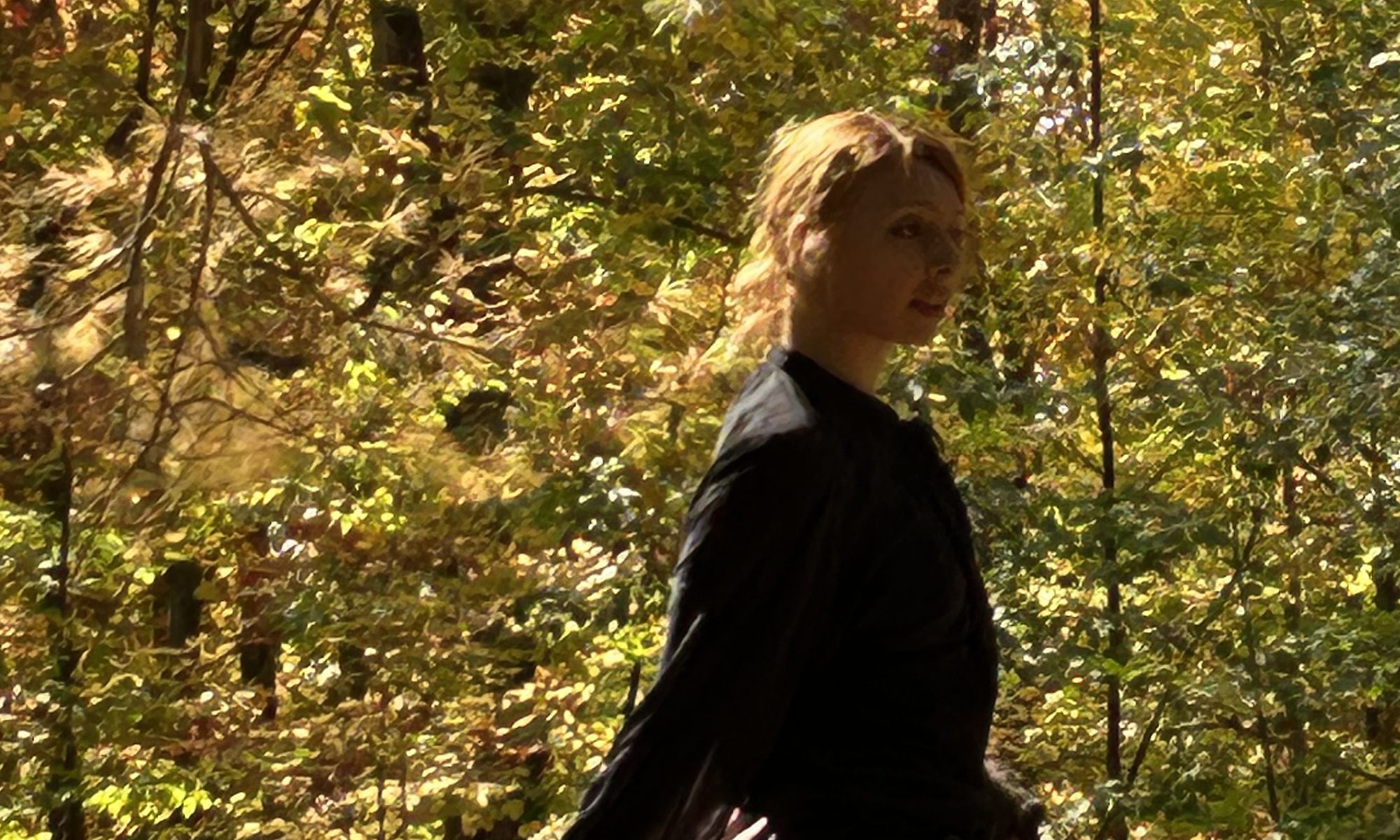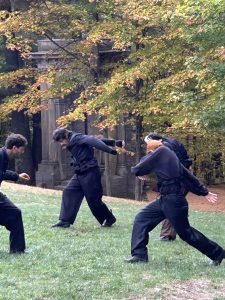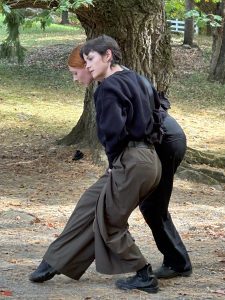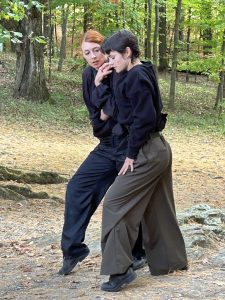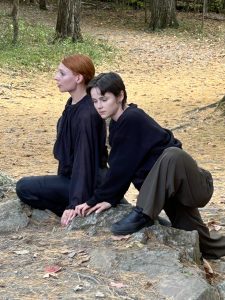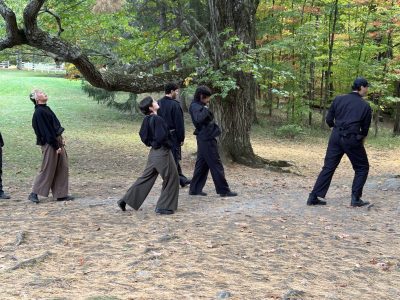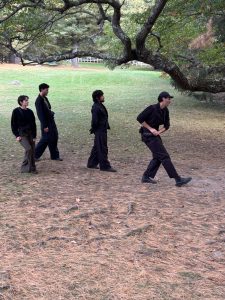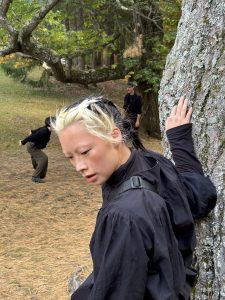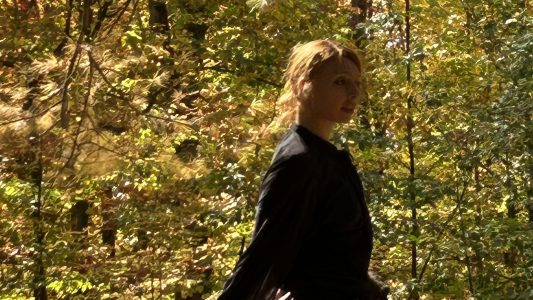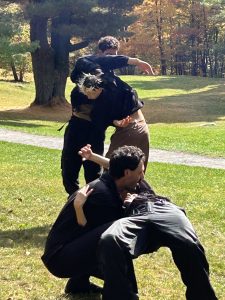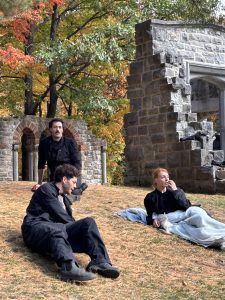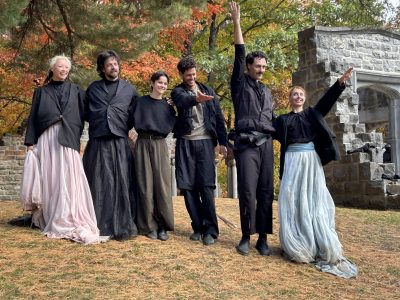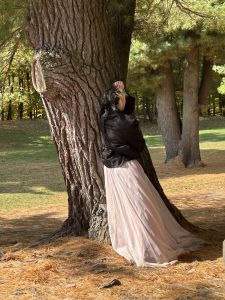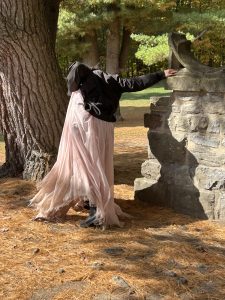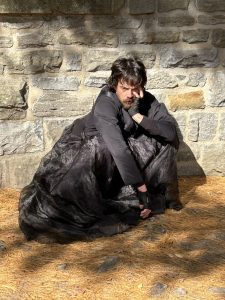Attending Danièle Desnoyers’s Les Scénographies-Paysages yesterday at the Mackenzie King Estate on a clear autumn afternoon was like stepping into a dialogue between movement, memory, and place. The red and golden hues of the trees seemed almost choreographed; it was as though the season had joined Desnoyers’s company in performance. What was striking about this work was how it resisted the conventional frame of the stage. The dancers’ movements did not merely unfold against a backdrop of ruins, gardens, and forest trails; they seemed to emerge from them, as if the estate itself were teaching the body how to move.
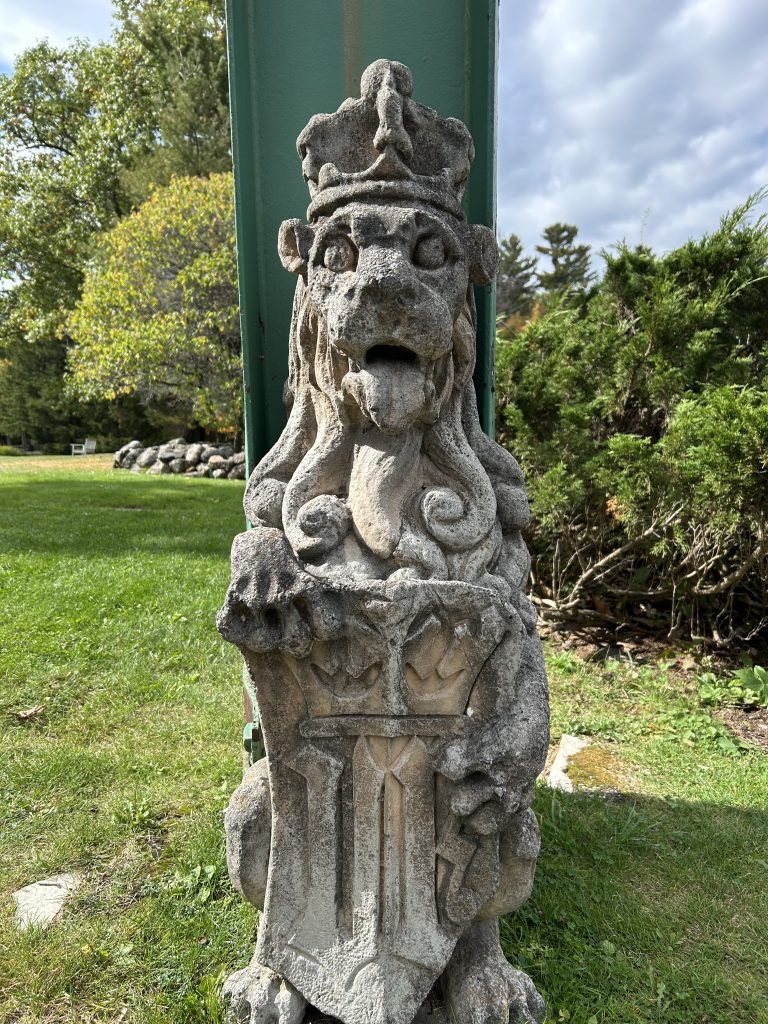
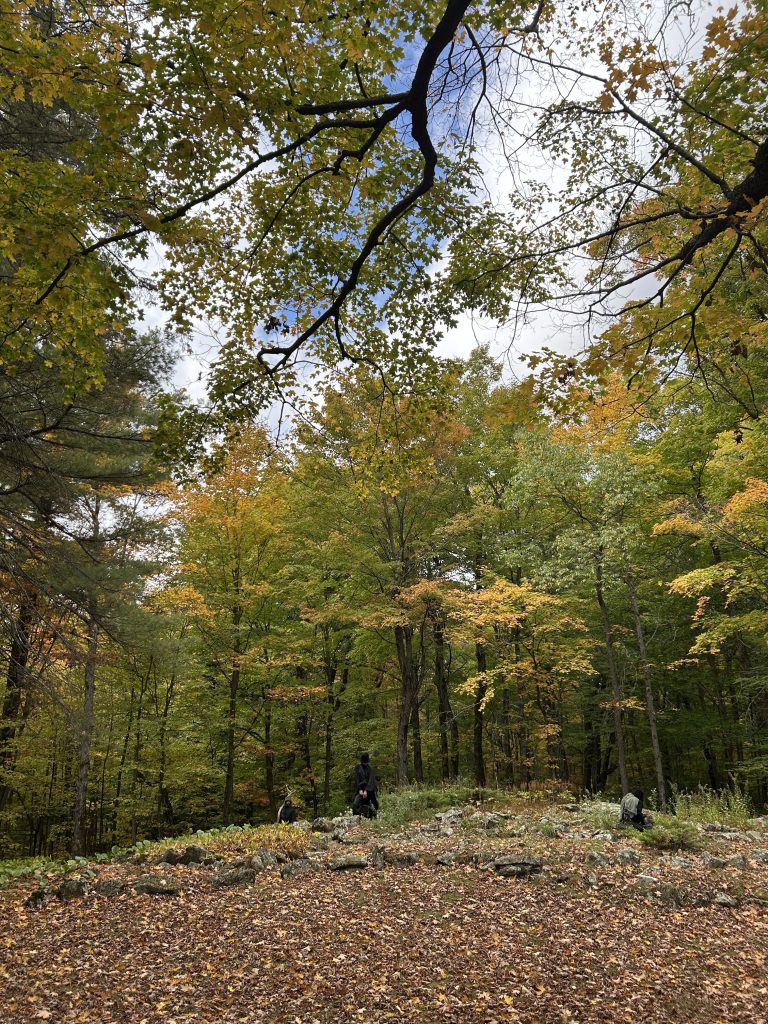
Danièle Desnoyers has long been interested in how choreography can be porous to its environment according to her biography; at the Mackenzie King Estate this openness finds a particularly rich counterpart. The site itself is a paradox: a cultivated wilderness, curated ruins, and gardens intended to feel both timeless and fragile. William Lyon Mackenzie King’s decision to import fragments of European stonework and arrange them as “ruins” in the Gatineau forest was an attempt to graft layers of history onto Canadian soil; it was as if to accelerate the presence of a past that otherwise was not there. These Romantic follies are at once artificial and poignant; they express both personal vision and a longing for timelessness. Desnoyers’s choreography responds to this temporal play, adding yet another “ruin,” although one made of moving bodies and fleeting gestures. Dance becomes an ephemeral architecture built within and against these fabricated stones.
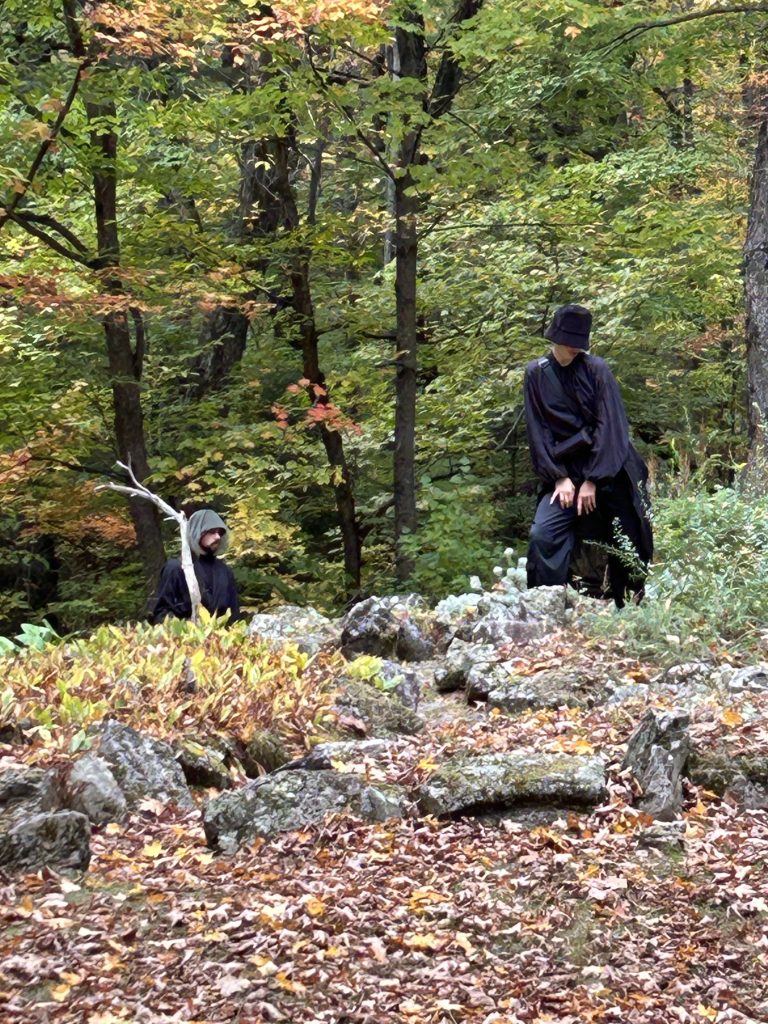
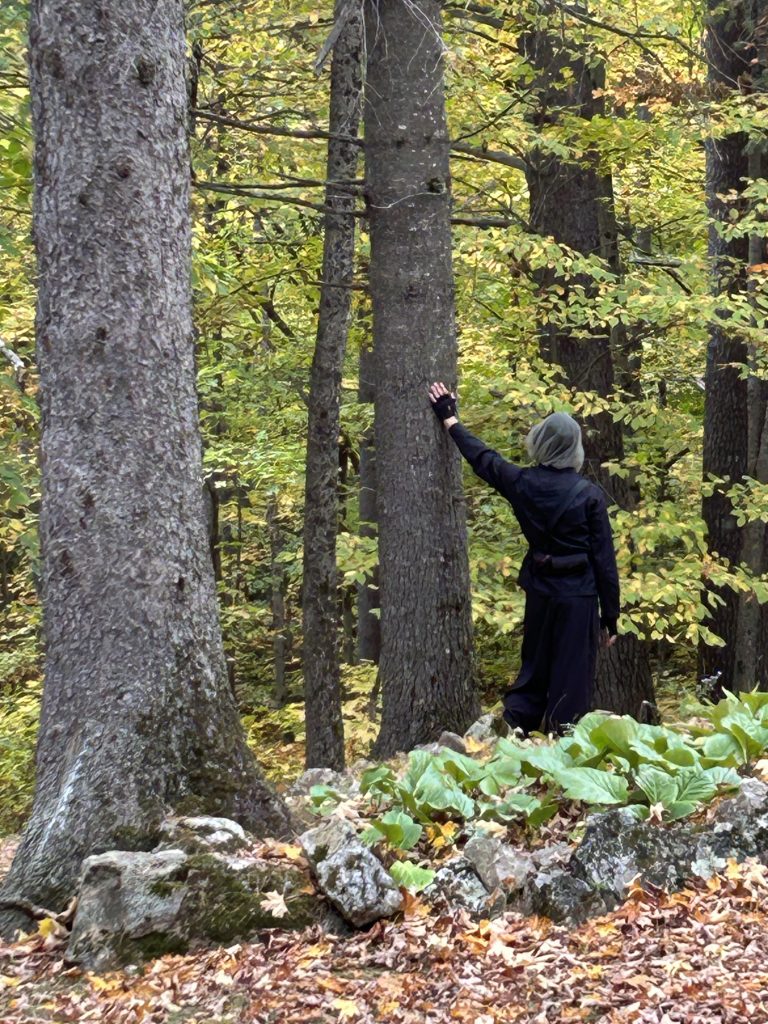
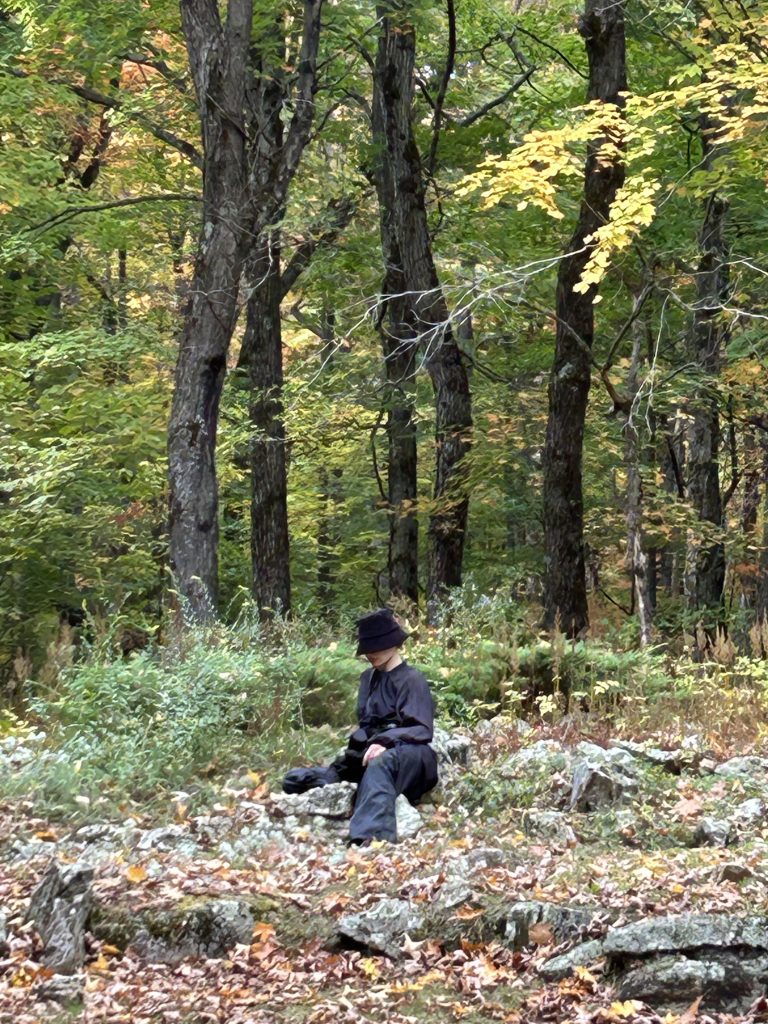
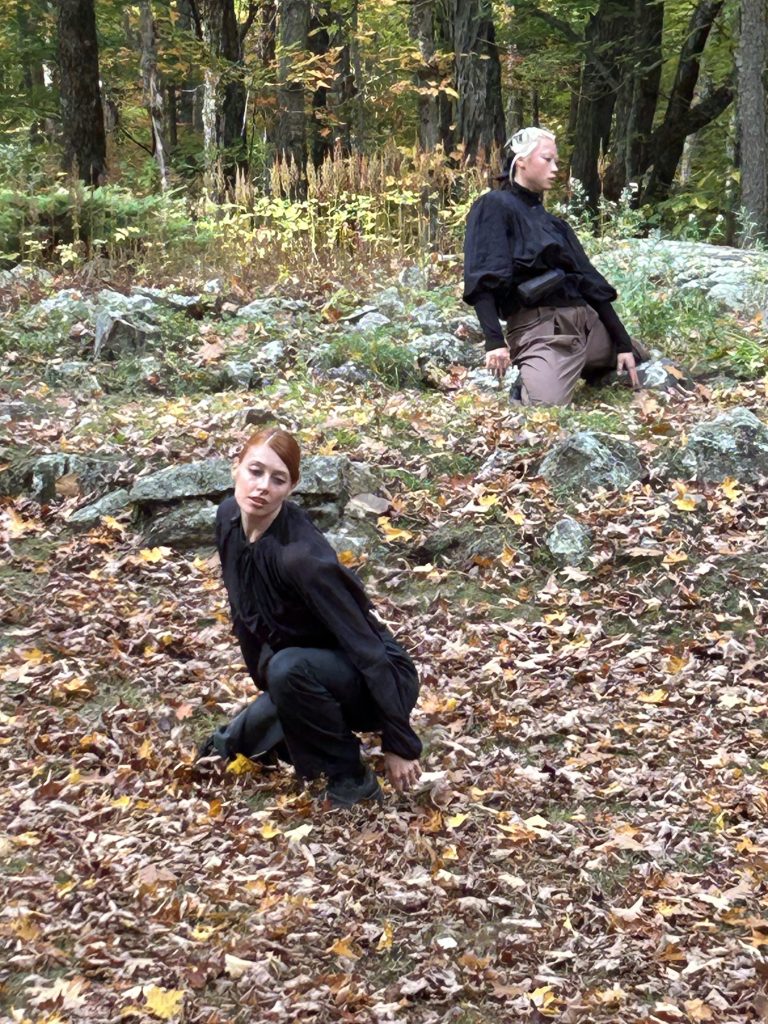
The performance’s wandering form transforms the audience into fellow-travellers. Unlike a stage that fixes the audience in a frontal relation, here you follow the dancers through shifting landscapes. Attending with friends underscored this collectivity. You witnessed not only the dancers but also one another, framed by trees and ruins, in the act of being present together. The nearness of bodies; performers and public alike; generates the “points of curiosity” Desnoyers describes, moments where the boundary between art and daily life thins. A shaft of light, the rustle of leaves, the sound of water; these details become part of the choreography, revealing how nature composes alongside the dancers.
What lingers after such an afternoon is not a single image or sequence but an impression of layered time. I saw the forest as both immediate and historical, natural and curated. I felt the ruins as both false and strangely resonant. Through the dance, I experienced how the ephemeral; steps, gestures, breath; can temporarily inscribe itself into this landscape of stone and tree. The joy of simply being outdoors on a beautiful fall day became part of the work’s poetic resonance. In this way, Les Scénographies-Paysages reminds us that choreography is not confined to the studio or the theatre but can exist wherever bodies, histories, and landscapes intersect. It does not impose spectacle but gently reveals how movement; human, seasonal, architectural, vegetal; can be understood as a shared composition.
Pizza and wonderful conversation at Roberto Pizza Romano in Chelsea after the show was the perfect ending!


